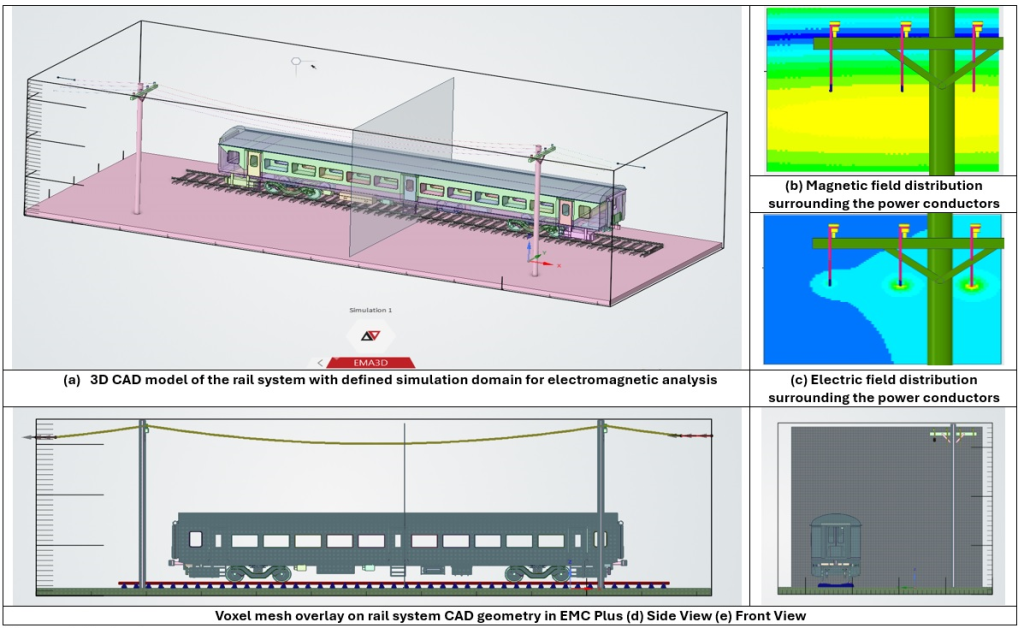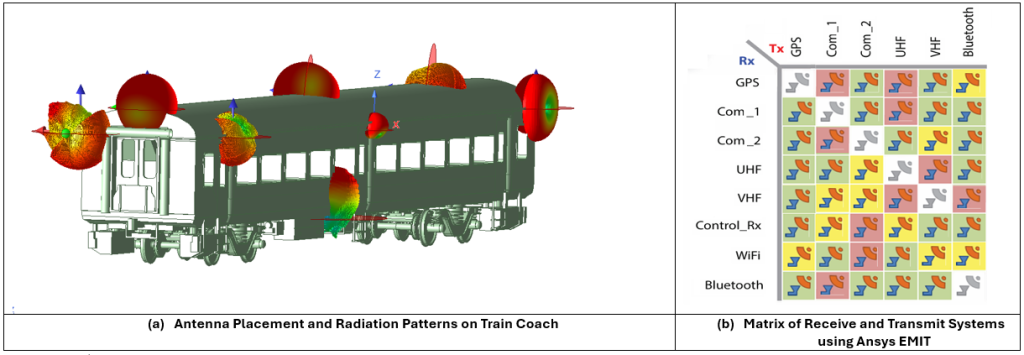

In the modern world of rail, electrification, speed, and connectivity define progress. Electromagnetic simulation in rail plays a vital role in addressing complex EMI, EMC, and RF interference challenges across modern electrified railway systems. Trains today are no longer just mechanical marvels—they are electromechanical ecosystems filled with sensors, power electronics, communication systems, and automation. As the railway sector continues to push boundaries, lightning, RF interference, EMI/EMC, and inductive interference caused by nearby power lines are emerging as critical challenges. To ensure safe, efficient, and regulation-compliant operation, engineers must look beyond physical prototypes and embrace the digital realm. Welcome to the world of electromagnetic simulation in rail—powered by Ansys.
Rail applications present unique electromagnetic challenges due to their large-scale mechanical structures, high-power electrification, and dense electronic integration. The physical size and complexity of rail platforms make electromagnetic modeling difficult and time-consuming using traditional tools. With numerous subsystems—traction drives, signaling equipment, communication antennas, and control electronics—operating in proximity, predicting interference between components and external infrastructure (such as nearby power lines) becomes critical.
Ansys EMC Plus enables engineers to model these extensive platforms efficiently, reducing the need for complex simulation preparation and cleanup. It allows for accurate prediction of EM interference, cable coupling, and lightning-induced effects. Meanwhile, Ansys Charge Plus provides detailed modeling of high-voltage phenomena such as corona, arcing, and insulation breakdown, helping ensure that rail electrification systems are both safe and compliant with industry standards. These technologies empower rail designers to simulate real-world EM challenges early in the development cycle—preventing costly redesigns and ensuring operational reliability.

Ansys EMIT is a platform-level simulation tool to predict, identify, and mitigate RF interference problems—making it ideal for railway applications in complex electromagnetic environments. Ansys EMIT predicts RFI in complex RF environments containing multiple transmitters and receivers. It enables rapid development of RFI mitigation strategies and evaluation of their impact on the entire system.

High-speed Electric Multiple Unit (EMU) trains generate electromagnetic fields (EMFs) across various frequencies, leading to concerns about potential health risks for passengers and train staff. EMFs can penetrate train carriages, primarily through windows, leading to exposure for passengers and staff. The distribution of these fields within the carriage can vary based on passengers’ proximity to windows, seating position, and train occupancy. EMF exposure experienced by passengers and staff on high-speed EMU trains should remain within international safety guidelines. Induced electric and magnetic fields inside train carriages should not exceed the reference levels set by the International Commission on Non-Ionizing Radiation Protection (ICNIRP). The amplitude of very high time-varying EM fields can be analysed using the Ansys EMC Plus tool.
Meanwhile, Ansys EMIT specializes in predicting and managing radio frequency interference within densely equipped rail communication environments, facilitating the rapid development of effective RFI mitigation strategies to safeguard critical signaling and connectivity systems. Together, these tools empower engineers to design safer, more reliable, and regulation-compliant rail networks by simulating real-world electromagnetic scenarios comprehensively and efficiently, ultimately supporting the continued advancement of rail electrification, speed, and connectivity. In conclusion, electromagnetic simulation in rail is essential for designing safe, efficient, and regulation-compliant railway systems in today’s connected world.